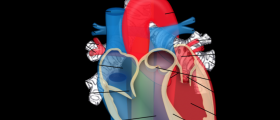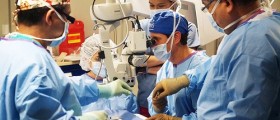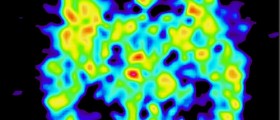
Brain aneurysm is the medical term for the condition characterized by the forming of abnormal bulge in the blood vessels found in the brain. This condition is also well-known as intracerebral aneurysm or intracranial aneurysm. Aneurysm tends to appear in the weak parts of the wall either of artery or vein in the frontal area of the Circle of Willis.
Causes of brain aneurysm
Brain aneurysm mat be caused by several factors and the main are head injury, hypertension and high cholesterol. Furthermore, head and neck tumors, cardiovascular diseases, congenital malformation of the blood channels, atherosclerosis and certain medical conditions, such as polycystic kidney disease and Marfan syndrome are also the potential culprits for the incidence of brain aneurysm. It is also considered that smoking, drug abuse and taking birth control pills may also lead to the occurrence of brain aneurysm.
As for the types of brain aneurysm, according to their size, brain aneurysm can be small, large, giant and super giant aneurysm. According to the shape, brain aneurysm can be berry, lateral and fusiform aneurysm.
Symptoms of brain aneurysm
When brain aneurysm is small it usually does not exhibit any symptom. On the other side, the most common symptoms of large brain aneurysm are intolerable headaches, increased sensitivity to light, the pain which appears behind and above the eyes and double vision. Moreover, the people who have brain aneurysm may also experience nausea, drooping of the eyelids, dilated pupils, one face side paralysis and stiff neck. The most serious warning signs of this condition are seizures and loss of consciousness.
Diagnosing and treatment for brain aneurysm
There are several medical procedures which can be employed in order to detect brain aneurysm. These medical procedures are CT, CTA, LP and MRI as well as angiography.
Before the doctor prescribe the proper treatment several things must be taken into consideration, such as the location of aneurysm, the age of the patient, neurological state as well as the general health of the patient. If the brain aneurysm ruptures then the immediate professional help is required. The doctors should restore proper respiration and blood pressure. Furthermore, the bleeding must be stopped and the brain damage should be prevented. In the cases of unruptured small aneurysm, the medications are prescribed since the possibility of rupture is very small. Furthermore, the large brain aneurysm can be treated by a surgery. There are three kinds of surgeries for this condition: microvascular clipping, endovascular coiling and shunt surgery.

















Your thoughts on this
Loading...